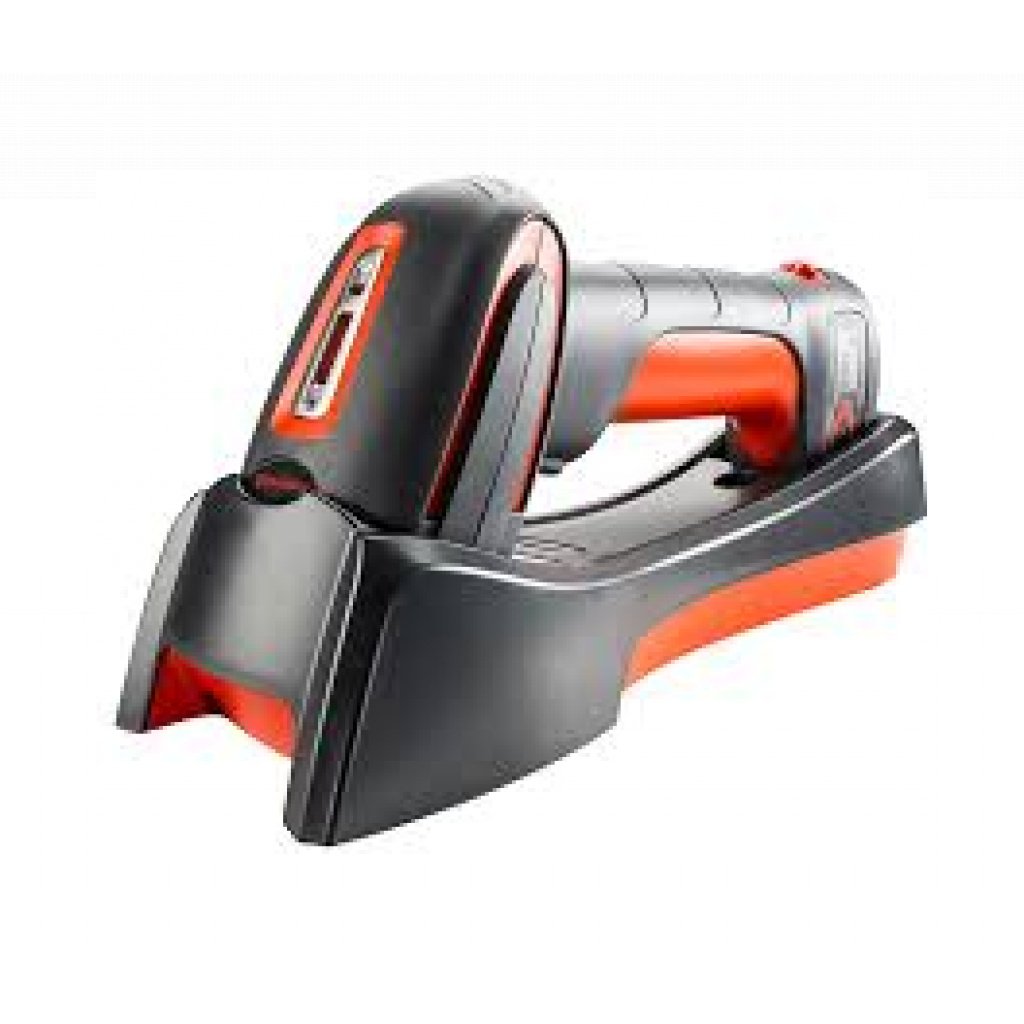Introduction
Why settle for less when the resilience of your operations can hinge on the durability of industrial barcode scanners? In the fast-paced world of logistics, manufacturing, and retail, equipment that withstands harsh environments, accidental drops, and constant use isn’t just beneficial—it’s essential. This post dives into why investing in durable scanners is a smart move for any business looking to streamline its processes and reduce downtime. From their ability to endure extreme temperatures to their resistance against dust and water ingress, we’ll explore how these rugged devices are built to last, ensuring your workflow remains uninterrupted no matter the challenges faced.
Key Takeaways
- Durability in industrial barcode scanners is crucial for ensuring operational efficiency and reducing downtime in harsh working environments.
- When selecting a scanner, prioritise models that meet established ruggedness standards, such as IP ratings and military specifications, to guarantee resilience against dust, water, and drops.
- Key features to look for in durable scanners include robust construction materials, shock-resistant design, and long-lasting battery life, which all contribute to a scanner’s ability to withstand tough conditions.
- Regular maintenance and adopting best practices can significantly enhance the lifespan of your scanner, safeguarding your investment over time.
- The future of durable scanners looks promising, with advancements in technology expected to offer even greater resistance to extreme conditions and rough handling.
- Making the right choice involves comparing brands and models based on their durability features, considering the specific needs of your industrial environment, and evaluating the total cost of ownership over the scanner’s lifespan.

Understanding Durability in Industrial Scanners
Defining Ruggedness
Ruggedness in industrial barcode scanners refers to their ability to operate reliably under harsh conditions. These devices are essential in environments where dust, moisture, and frequent drops are common. Durability and reliability are crucial for maintaining operational efficiency and reducing replacement costs. The ruggedness of a scanner is largely determined by its materials, such as reinforced plastics or metals, and design elements like shock-absorbing cases.
Key features that enhance a scanner’s ruggedness include water and dust resistance, temperature tolerance, and drop protection. Manufacturers often incorporate rubberized grips to prevent slips and falls, adding another layer of durability.
Standards and Certifications
Various standards and certifications serve as benchmarks for assessing the ruggedness of industrial barcode scanners. Commonly recognized ones include MIL-STD for military-grade durability and IP ratings (Ingress Protection) that specify degrees of protection against solids and liquids.
MIL-STD certification implies that a device can withstand extreme conditions, from temperature fluctuations to humidity and salt fog exposure. IP ratings, on the other hand, indicate how well a scanner resists ingress from dust and water. For example, an IP67-rated scanner is completely protected against dust and can be submerged in water up to 1 meter deep for 30 minutes.
Testing procedures for these certifications involve rigorous trials where devices undergo drops from specific heights onto concrete, exposure to various substances, and operation in extreme temperatures.
Impact and Pressure Resistance
Impact and pressure tests are critical for determining how well a barcode scanner can survive physical challenges typical in industrial settings. Tests may simulate drops from several meters high or compressive forces that mimic being stepped on or run over by equipment.
Materials like high-impact plastics or metal alloys contribute significantly to a scanner’s resilience against damage. Design features such as raised edges around screens or recessed buttons help protect sensitive components from direct impacts.
Impact and pressure resistance not only ensure the longevity of the device but also safeguard its operational integrity. This means fewer interruptions in workflows due to equipment failure, leading to more consistent productivity levels.
The Role of Durability
Field Operations
Industrial barcode scanners face numerous challenges in field operations. They endure exposure to various elements and rough handling. These conditions demand robust design and features. Manufacturers often equip these devices with water-resistant casings and shock-absorbent materials.
The benefits of using rugged scanners in such environments are significant. They include reduced downtime and lower maintenance costs. These advantages ensure operations continue smoothly, without interruption.

Industrial Settings
In industrial settings, the environment is harsher. Dust, debris, and liquids are common hazards. Rugged scanners designed for these conditions have protective measures against such factors. Features like dust-proof enclosures and liquid resistance are standard.
These adaptations are crucial for maintaining efficiency on manufacturing floors, warehouses, and logistics centres. Rugged scanners play a pivotal role in keeping operations productive by minimizing equipment failure.
Data Capture Efficiency
The durability of a scanner significantly impacts its data capture capabilities. Rugged designs incorporate advanced scanning technology and ergonomic features. These contribute to both speed and accuracy in data collection.
Efficient data capture is vital in critical industrial processes. It ensures accurate tracking and management of resources. Reliable data capture underpins effective decision-making and operational efficiency.
Key Features of Durable Scanners
Material and Build
Manufacturers select reinforced plastics and metals for rugged barcode scanners. These materials ensure durability against drops, knocks, and environmental conditions. The build quality directly impacts a scanner’s lifespan. It makes the device reliable in harsh settings.
They also consider ergonomics and weight. This balance ensures users can handle the devices comfortably over long periods. Thus, material choice and build are crucial for both durability and user experience.
Long-Range Capabilities
In industrial environments, the ability to scan from a distance is vital. It allows workers to capture data without needing to be close to items. This capability is especially important in areas that are difficult to reach or in hazardous conditions.
Technologies like laser scanning and image capture enable these long-range capabilities. They ensure accuracy even from afar. The benefits include not just safety but also increased efficiency in operations.
Battery Life and Power
For intensive use, rugged scanners need long-lasting battery life. Workers rely on these devices throughout their shifts without frequent recharging or battery changes. Manufacturers equip them with high-capacity batteries, either replaceable or rechargeable.
Power management features play a significant role here. They extend operational time and minimise downtime. Efficient power use means that scanners can last longer on a single charge, which is essential in fast-paced industrial settings.
Standards for Rugged Scanners
IP Ratings Explained
IP ratings, or Ingress Protection ratings, serve as a universal benchmark for assessing how well electronic devices, like barcode scanners, resist entry of dust and water. Each IP rating comprises two digits: the first indicates protection against solids while the second signifies liquid resistance. For instance, an IP67-rated scanner is fully protected against dust (6) and can be submerged in water up to 1 metre deep for 30 minutes (7).
These ratings are crucial when selecting a scanner for environments prone to dust exposure or accidental immersion. They ensure that users choose devices capable of withstanding their specific work conditions.
Drop and Shock Tests
To simulate real-world handling, rugged scanners undergo rigorous drop and shock tests. These evaluations involve repeatedly dropping the devices from specified heights onto concrete or steel surfaces. A common standard is surviving drops from 1.5 to 2 metres.
Passing these tests confirms a scanner’s ability to withstand accidental falls and rough treatment, making it reliable under harsh use. Such durability is essential in fast-paced industrial settings where equipment frequently faces physical challenges.
Temperature Extremes
Rugged scanners are engineered to operate within broad temperature ranges, typically from as low as -20°C to as high as 50°C. This resilience is achieved through special materials and design adaptations that protect internal components from extreme temperatures.
Temperature tolerance is particularly vital for devices used outdoors or in environments like cold storage warehouses. It ensures uninterrupted scanning performance regardless of weather conditions or indoor climate control systems.
Comparing Durability Across Brands
Performance Analysis
To gauge the durability and efficiency of rugged scanners, performance metrics are crucial. These metrics often include scan speed and error rates. They provide a quantitative measure of a scanner’s ability to perform under various conditions.
Manufacturers use these benchmarks to assess their products’ performance. This is vital for continuous improvement in scanner designs. A scanner that excels in these metrics can withstand harsh environments better. It also maintains high efficiency over time.
Leading Brand Comparison
When examining the ruggedness of barcode scanners, leading brands show distinct features. Each brand employs unique technologies or design elements to enhance durability. For instance, some may focus on shock resistance, while others prioritise water and dust protection.
Users should consider various factors when comparing brands. Warranty and support services are among these factors. They offer insight into a brand’s confidence in its products and commitment to customer satisfaction.
User Preferences
Users prioritise different features when selecting rugged barcode scanners. Durability, usability, and cost are key considerations. Feedback from users plays a significant role in the development of new models and features.
Manufacturers strive to balance ruggedness with other factors to meet user expectations. This balance ensures that scanners are not only durable but also user-friendly and cost-effective.
Enhancing Scanner Lifespan
Maintenance Tips
Regular maintenance is crucial for rugged barcode scanners. It ensures they perform reliably over time. Cleaning the scanner lenses and exteriors prevents dust and debris from affecting performance. Users should follow the manufacturer’s guidelines for cleaning to avoid damage.
tware updates are another key aspect of maintenance. They address bugs, improve functionality, and protect against security vulnerabilities. Regularly updating the software keeps scanners running smoothly.
Battery care cannot be overstressed. Proper charging practices extend battery life and prevent power issues. Using only manufacturer-approved batteries and chargers is advisable. This practice avoids potential damage to the scanners.
These maintenance steps reduce downtime. They also prolong the operational life of rugged barcode scanners.
Optimising Usage
Integrating rugged barcode scanners with other systems enhances data management. It improves workflow efficiency in industrial settings. This integration allows for real-time data sharing between devices, streamlining operations.
Training staff on best practices for scanner usage is vital. Proper handling reduces wear and tear on the devices. It also minimises the risk of accidental damage from drops or misuse.
Optimising scanner use involves understanding its features fully. This knowledge ensures that all functionalities are utilised efficiently, adding value to industrial processes.
Upgrade Options
Upgrading rugged barcode scanners often involves both hardware add-ons and software updates. Hardware enhancements can include better scanning modules or extended battery packs. These additions improve performance and adaptability to various environments.
tware updates play a significant role in upgrading. They introduce new features, enhance existing ones, and improve overall system compatibility. Keeping software current is essential for maximising scanner utility.
The decision to upgrade depends on several factors:
- Evolving operational needs
- Technological advancements
- Cost considerations
Upgrades offer enhanced functionality and can significantly extend the lifespan of barcode scanners.
Future of Durable Scanners
Tech Advancements
Recent years have seen remarkable strides in the domain of rugged barcode scanning technology. Manufacturers have rolled out scanners equipped with enhanced scanning algorithms that promise quicker, more accurate reads even in challenging conditions. These advancements not only boost the efficiency of data capture but also extend the operational life of the devices.
Connectivity has seen significant improvements too. Modern rugged scanners offer a variety of connectivity options, including Bluetooth and Wi-Fi, facilitating seamless integration into existing networks. This versatility ensures that they can adapt to various industrial environments without necessitating major infrastructural changes.
Looking ahead, we anticipate further innovations in scanner durability and functionality. Potential developments could include advanced materials for even greater resistance to wear and tear, and smarter software solutions that enable predictive maintenance, reducing downtime and extending lifespan.
Industry Trends
Rugged barcode scanners are becoming indispensable across a broad spectrum of industries. Each sector presents unique challenges and requirements which influence scanner design. For instance, logistics companies prioritize speed and battery life due to the high volume of goods they process daily. In contrast, manufacturing sectors might value durability over speed due to harsher operating environments.
These industry-specific needs drive manufacturers to tailor their products accordingly, leading to a diverse range of rugged scanners on the market. Moreover, as businesses increasingly embrace digital transformation and automation, rugged scanners play a pivotal role in streamlining operations and enhancing productivity.
The adoption rate of rugged scanners is climbing steadily, reflecting their critical role in enabling businesses to keep pace with digital advancements while maintaining operational efficiency.
User Expectations
Users today expect far more from their rugged barcode scanners than mere durability. They demand devices that can deliver high performance under extreme conditions without compromising on features or ease of use. This includes long battery life, fast scanning capabilities, and intuitive interfaces that require minimal training.
Manufacturers are responding to these expectations by incorporating cutting-edge technologies into their designs. Innovations such as touchscreens that work with gloves and advanced imaging technologies for reading damaged barcodes are becoming standard features.
User feedback has become invaluable in this process. It informs manufacturers about what works well and what doesn’t, guiding them in refining existing models and developing new ones that better meet users’ needs.
Making the Right Choice
Assessing Needs
Selecting the right rugged barcode scanner begins with assessing operational needs. It’s crucial to consider the environmental conditions where the scanner will be used, such as extreme temperatures, moisture levels, or exposure to chemicals. The intensity of usage also plays a significant role. High-volume scanning operations require devices that can withstand constant use without failure.
Specific application requirements must not be overlooked. For instance, certain industries might need scanners compatible with unique barcode formats or capable of capturing data from a distance. A thorough needs assessment ensures that the chosen scanner aligns perfectly with operational demands, thereby enhancing efficiency and productivity.
Evaluating Features
When it comes to features, durability indicators like IP ratings and drop test results are paramount. These metrics provide insight into how well a scanner can resist environmental challenges and physical impacts. Scanning capabilities, including read range and speed, determine how effectively the device captures data under various conditions.
Ergonomics is another critical factor. Devices designed for ease of use reduce operator fatigue and increase efficiency over long periods. Weighing the importance of these features against specific use cases helps in identifying a scanner that offers optimal performance and value.
Considering Costs
The financial aspect of acquiring rugged barcode scanners encompasses more than just the initial purchase price. Maintenance expenses and the potential savings from reduced downtime due to device failures are also key considerations. Assessing the total cost of ownership gives a clearer picture of long-term expenses and benefits.
Comparing different scanner options based on their upfront costs versus ongoing maintenance can reveal which models offer greater long-term value. This approach ensures that investment decisions are informed by both immediate needs and future returns, maximising ROI.
Final Remarks
Choosing the right industrial barcode scanner isn’t just about ticking boxes for features; it’s about understanding the interplay between durability, functionality, and the evolving demands of your industry. Your journey through the aspects of durability, from key features to standards for ruggedness, and comparing brands, has equipped you with the knowledge to make an informed choice. The future of durable scanners looks promising, with advancements aimed at enhancing lifespan and performance. Remember, selecting a scanner that aligns with your needs not only optimises your operations but also ensures a return on investment over time.
As you stand at the crossroads of decision-making, consider not just what meets the eye today but what will stand the test of time in your industrial environment. Make the right choice; invest in a scanner that promises durability and efficiency. Let’s move towards a future where every scan counts towards productivity and progress. Your next step? Reach out to experts or dive deeper into specific models that have caught your eye. The path to enhanced operational efficiency is in your hands.
Frequently Asked Questions
What determines the durability of an industrial barcode scanner?
Durability is determined by a scanner’s ability to withstand drops, dust, water exposure, and extreme temperatures. Key features include rugged design, protective casing, and IP rating.
How important is durability for industrial scanners?
Durability is determined by a scanner’s ability to withstand drops, dust, water exposure, and extreme temperatures. Key features include rugged design, protective casing, and IP rating.
What are the key features to look for in a durable scanner?
Look for a high IP rating (indicating dust and water resistance), drop resistance specifications, robust construction materials, and a design tailored for tough environments.
What do standards like IP rating mean for rugged scanners?
IP ratings define the level of sealing effectiveness against intrusions such as dust and moisture. Higher numbers indicate greater protection, ensuring the scanner’s performance in challenging conditions.
How does durability vary across different brands of scanners?
Durability varies based on design focus, materials used, and technology implemented. Some brands prioritise ruggedness and invest in advanced durability features more than others. Zebra and Honeywell are well known and respected brands.

Ulrik Maxen: Specialist in rugged computers and mobile scanners
Ulrik is an industry veteran with over two decades of expertise working with rugged computers and mobile barcode scanners. Brands include Panasonic, DELL, Getac, Zebra, and Honeywell/Intermec. He is known for his commitment to delivering products and solutions that increase operational efficiency. Dedicated to following new market trends and client satisfaction, Ulrik is a trusted advisor where rugged computers and mobile barcode scanners must be deployed.


